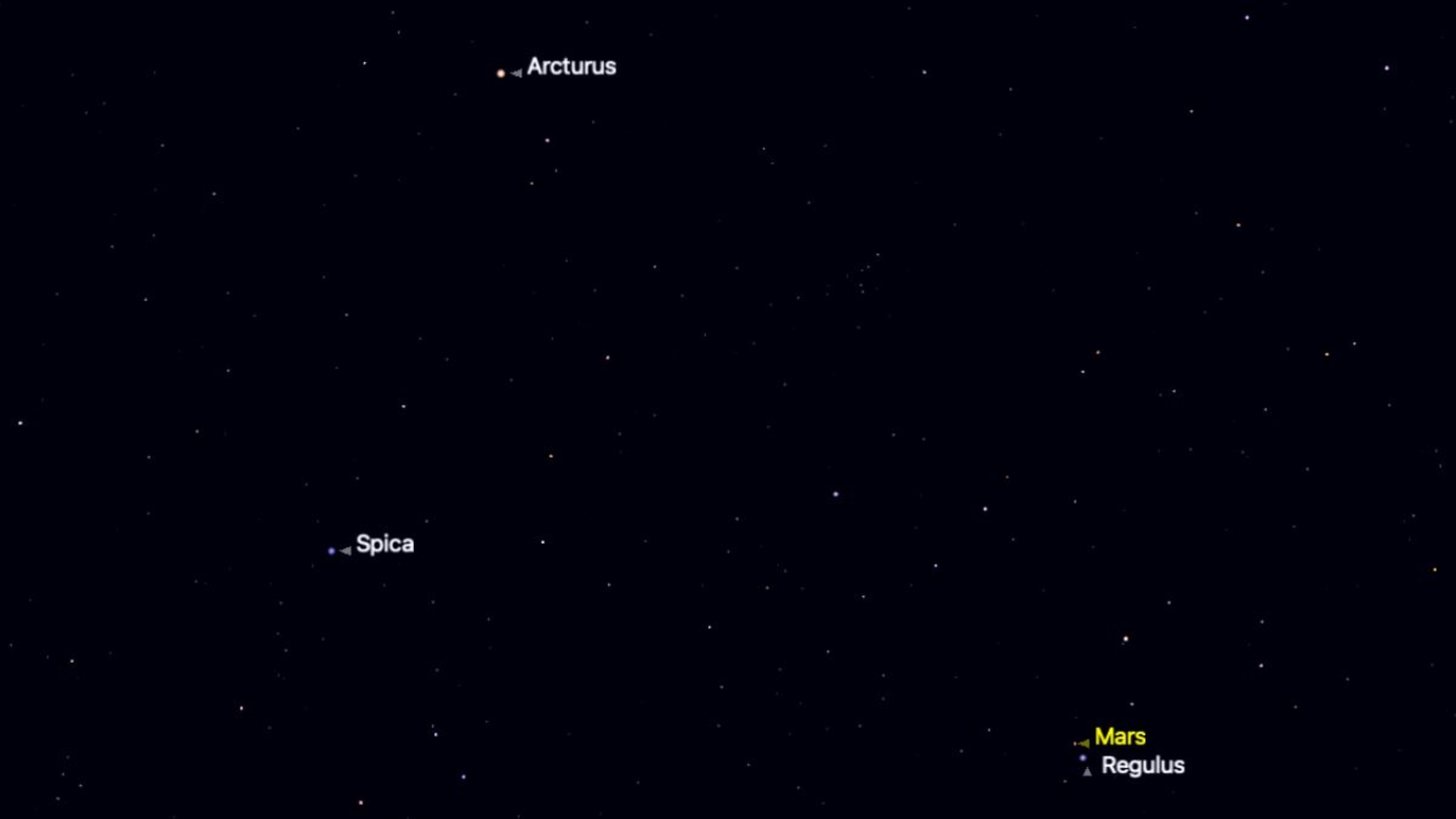ExoMars In Photos: Schiaparelli Probe's Mars Landing Day
ExoMars Lander Crash Site in Color: Crater
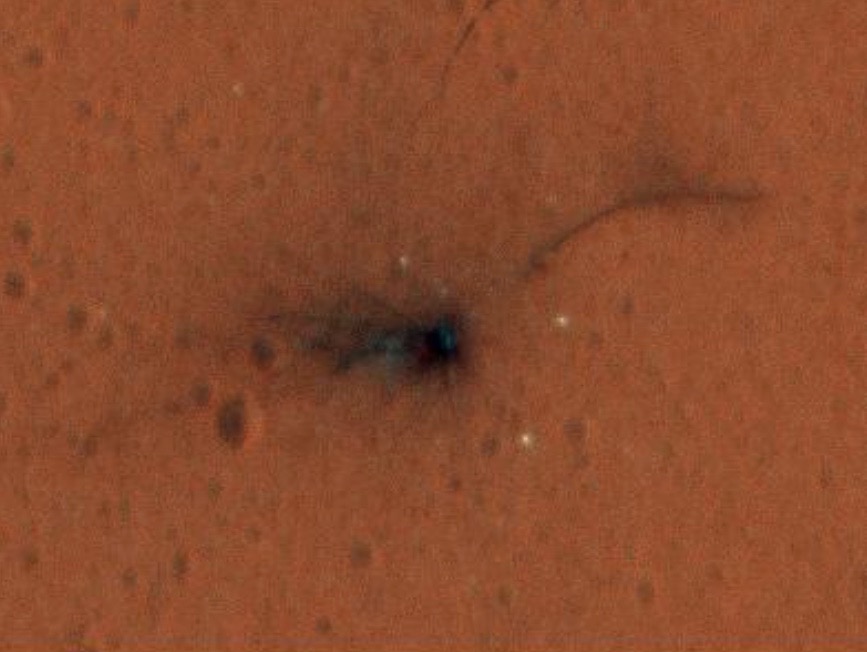
Zoomed-in view of the crater caused by the crash of Europe's Schiaparelli Mars lander on Oct. 19, 2016. Photo taken by NASA's Mars Reconnaissance Orbiter on Nov. 1, 2016.
ExoMars Lander Crash Site: After View
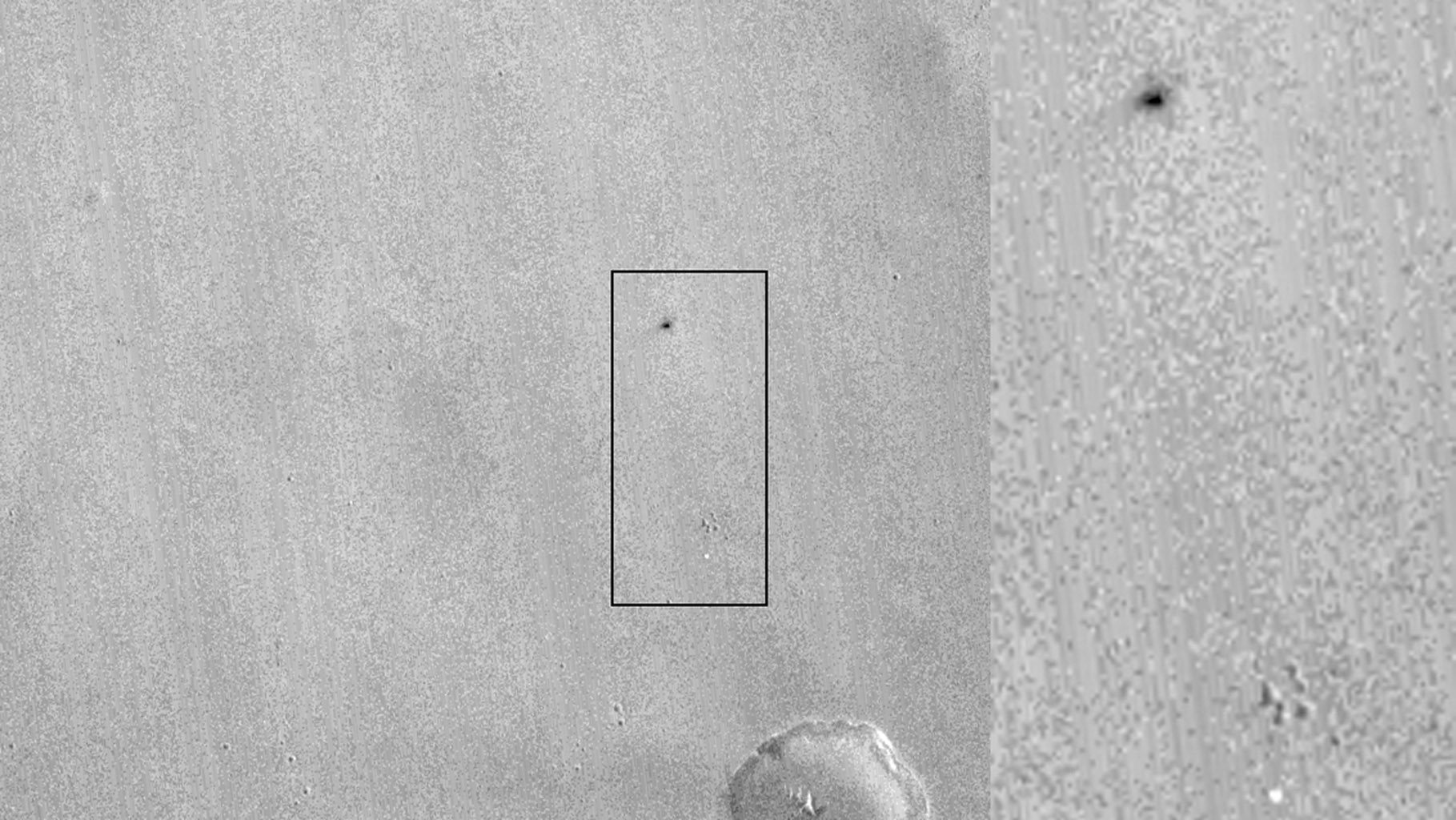
The European Space Agency tried to land a spacecraft on Mars on Wednesday (Oct. 19), but it failed during its descent. The Schiaparelli lander crashed (as seen in this image) but its mothership Trace Gas Orbiter entered Mars orbit as planned. See more images from the probe's landing day here. HERE: This image by NASA's Mars Reconnaissance Orbiter shows what appears to be the ExoMars lander's parachute (bright spot at bottom) and the impact site of the lander itself (dark patch at top). Read the Full Story.
ExoMars Lander's Crash Site: MRO Photo
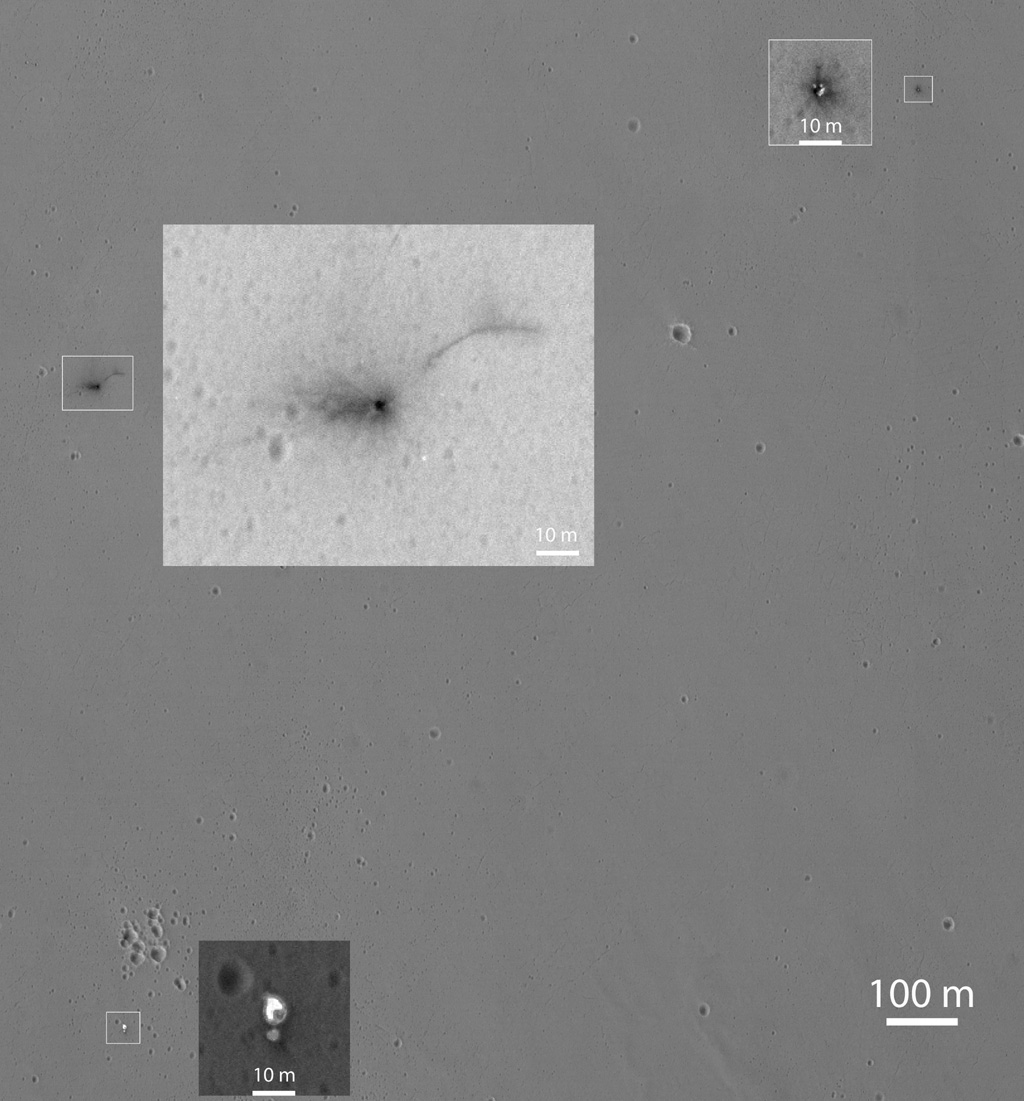
This Oct. 25, 2016, image from the HiRISE camera on NASA's Mars Reconnaissance Orbiter shows the area where Europe's Schiaparelli lander struck Mars. The inset at center shows where the main lander hit; at bottom is Schiaparelli’s parachute and back heat shield, while the inset at upper right shows the front heat shield.
ExoMars Lander's Crash Site: Zoomed-in MRO View
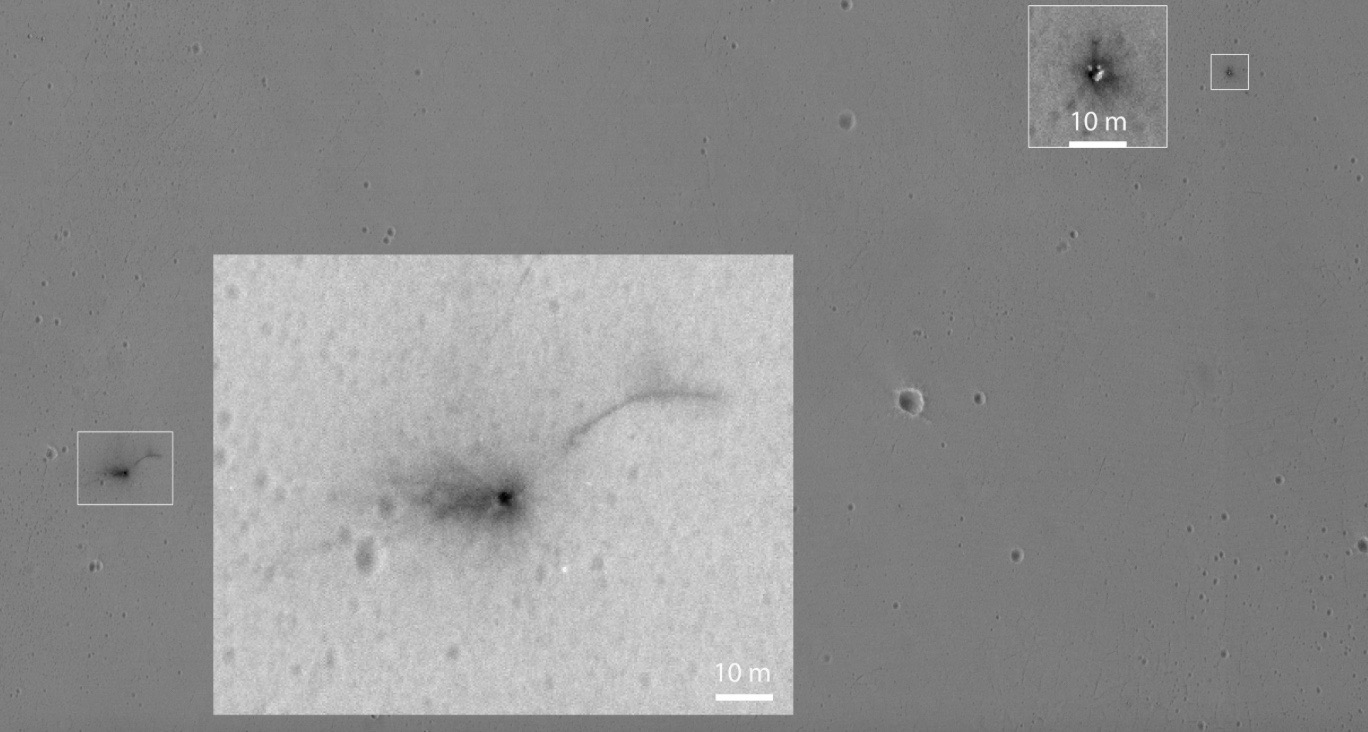
Zoomed-in view of an Oct. 25, 2016, image from the HiRISE camera on NASA's Mars Reconnaissance Orbiter showing the crater gauged out by the impact of Europe's Schiaparelli lander on Oct. 19, 2016 (center). The inset at upper right shows the vehicle’s front heat shield.
Schiaparelli ExoMars Lander: Crash Site
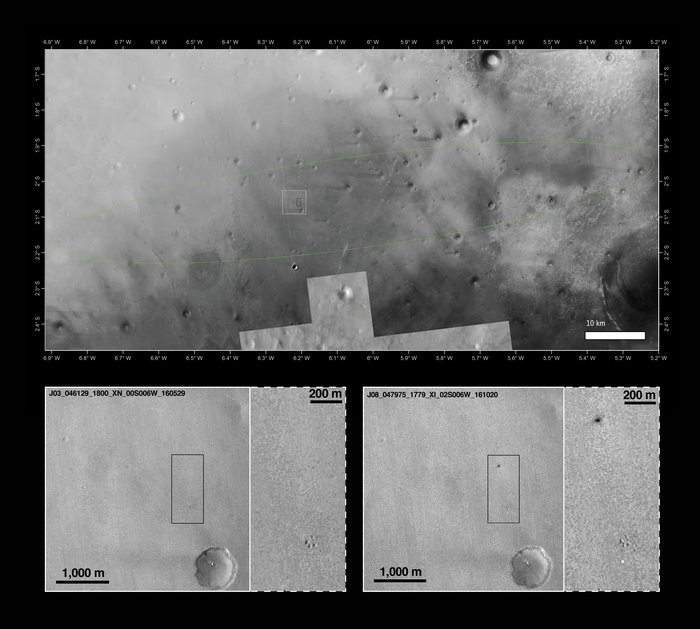
The landing site of the ExoMars Schiaparelli lander within the predicted landing ellipse (top), along with zoomed-in, before-and-after views (bottom left and bottom right, respectively) showing evidence of the lander’s crash. Read the Full Story.
ESA sets the stage for their first Mars landing
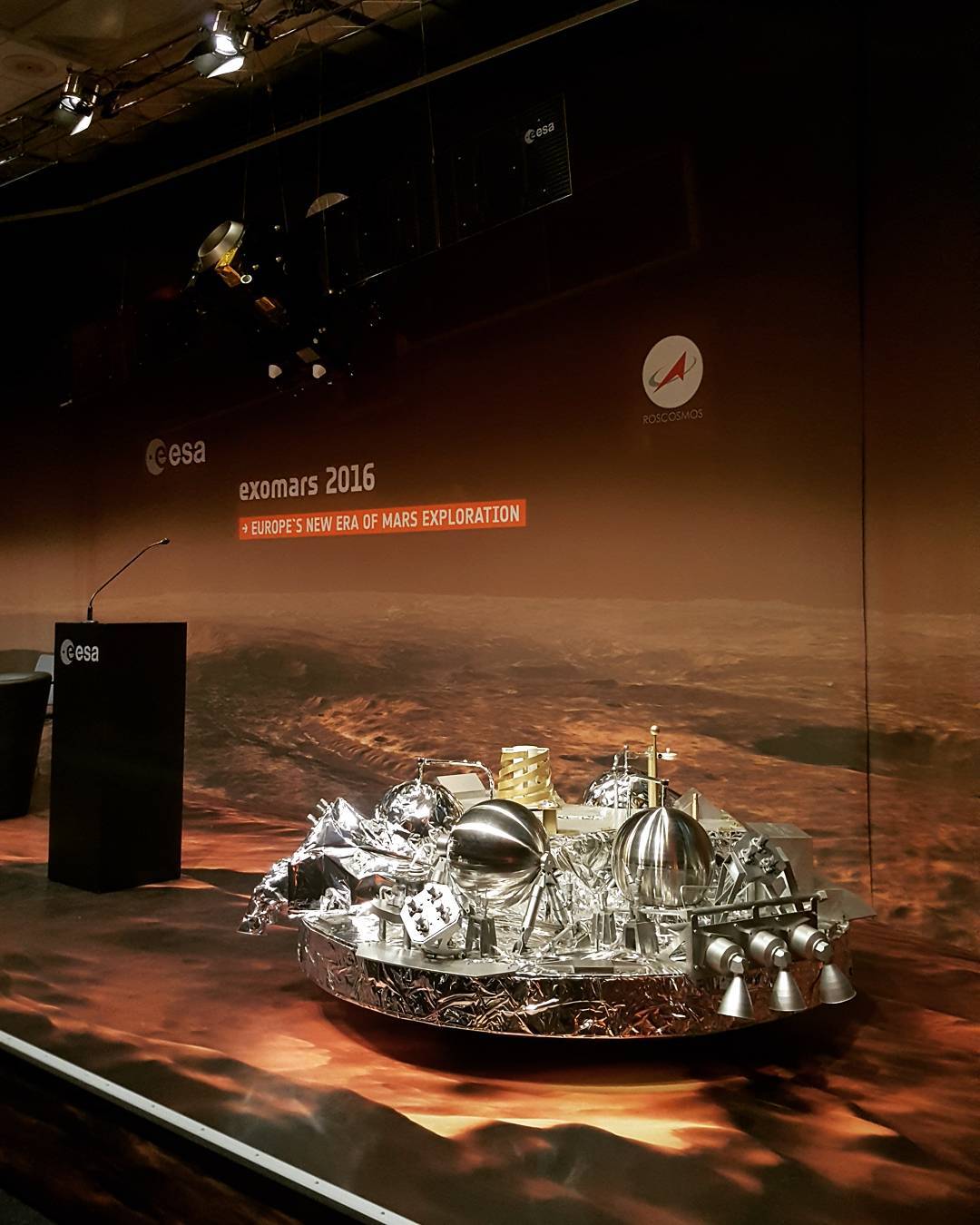
The European Space Agency's stage at the European Space Operations Center in Darmstadt, Germany on Oct. 19 for the arrival of ExoMars 2016. The mission includes two spacecraft: the Trace Gas Orbiter and the Schiaparelli lander. on Mars
Color Photo of ExoMars Lander Crash Site
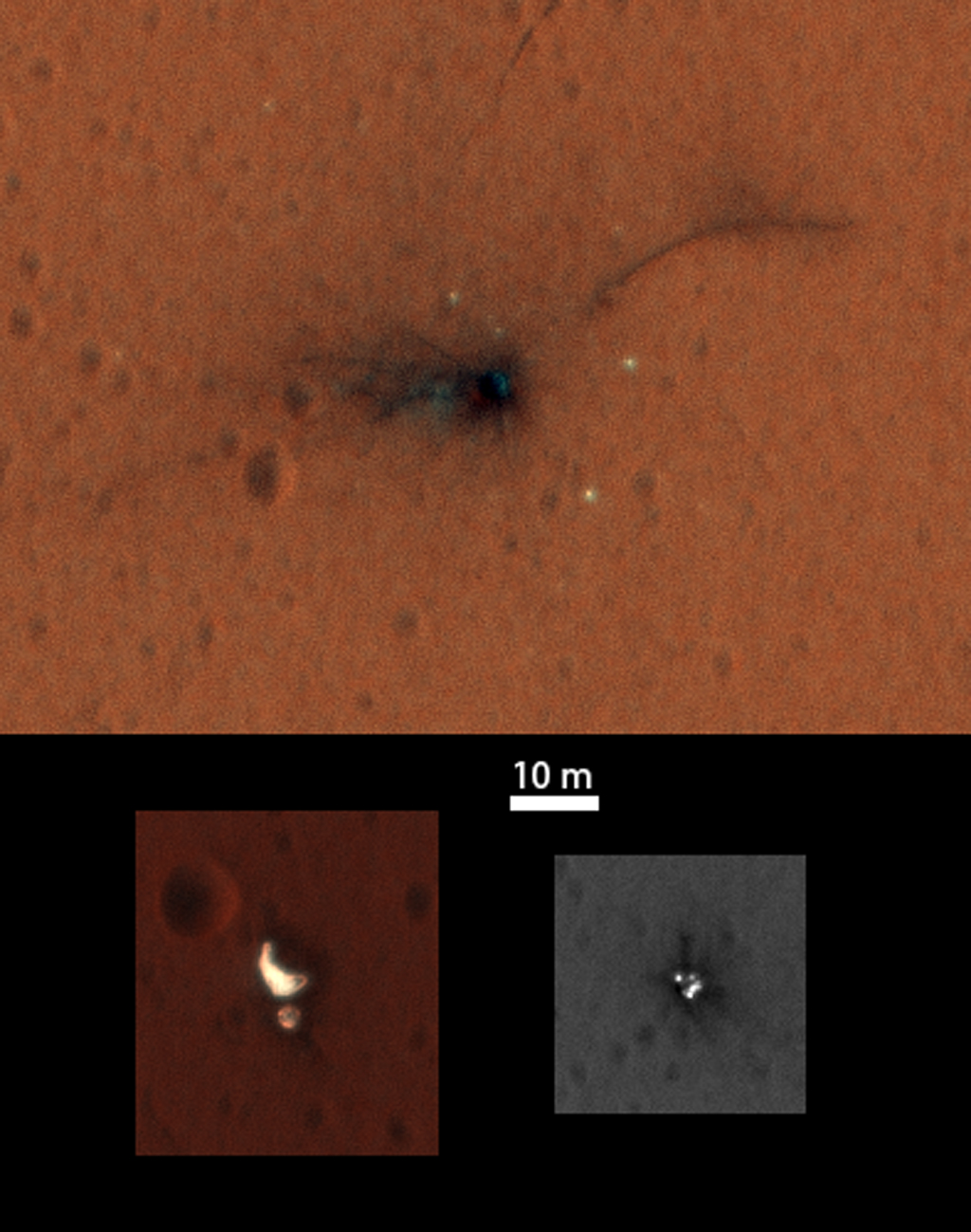
These images taken by NASA's Mars Reconnaissance Orbiter on Nov. 1, 2016, show the wreckage of Europe’s Schiaparelli lander, which crashed on the Red Planet on Oct. 19, 2016. At top is the crater caused by the lander’s impact; at bottom left is the craft’s parachute and attached back heat shield. The feature at bottom right is thought to be the front heat shield. The 10-meter scale bar applies to all three portions of the image.
Breaking space news, the latest updates on rocket launches, skywatching events and more!
ExoMars 2016 Landing Infographic
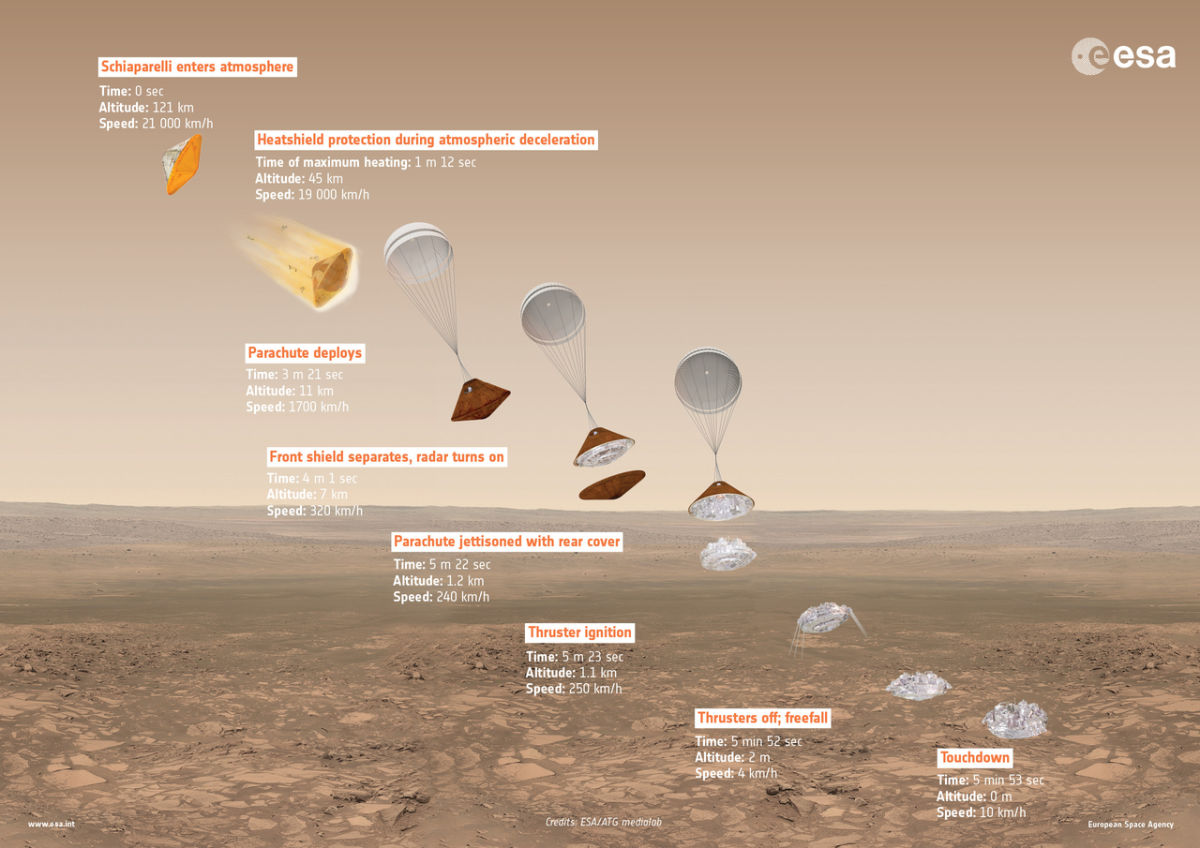
This infographic illustrates the steps of Schiaparelli's descent and landing on Mars.
Thrusters fired
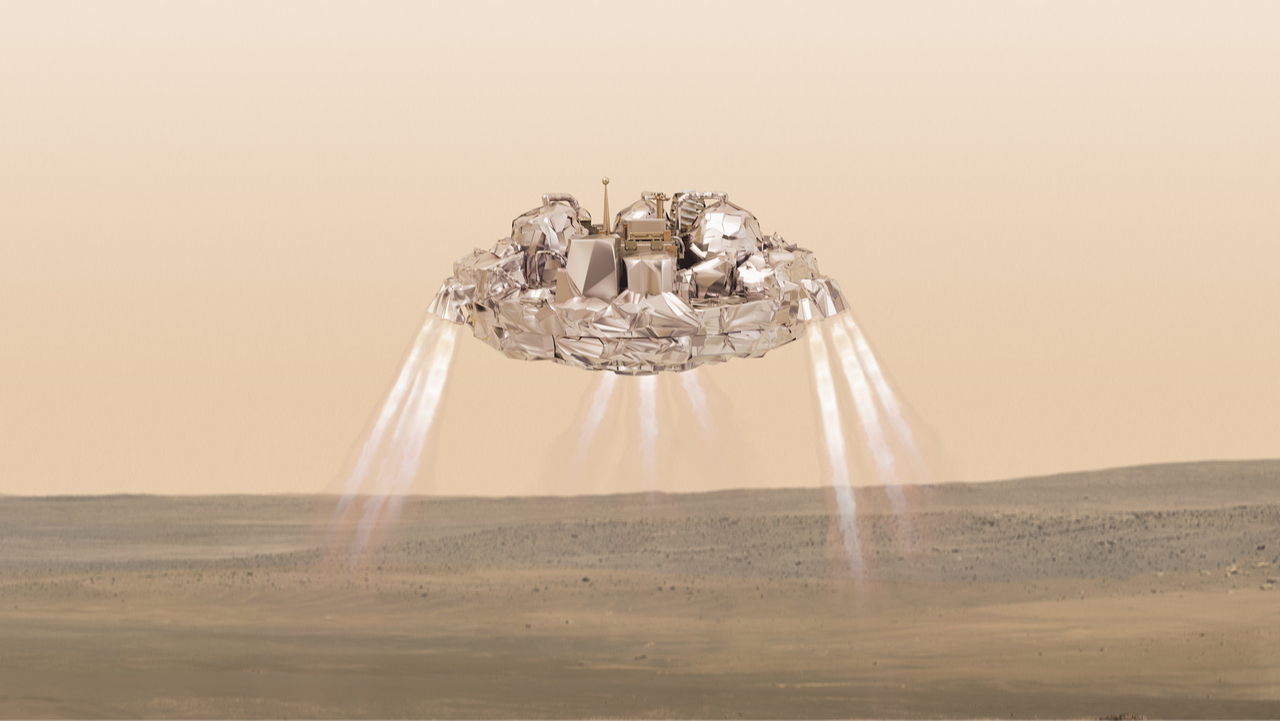
Artist's illustration of ExoMars' Schiaparelli lander about to touch down on the Red Planet. The lander fired its thrusters at about 0.68 miles (1.1 km) above the surface to slow down before impact.
ExoMars Update: Schiaparelli MIA

In a press briefing on Oct. 20, ESA officials explain that contact has been lost with the Schiaparelli lander.
Mission control prepares for descent
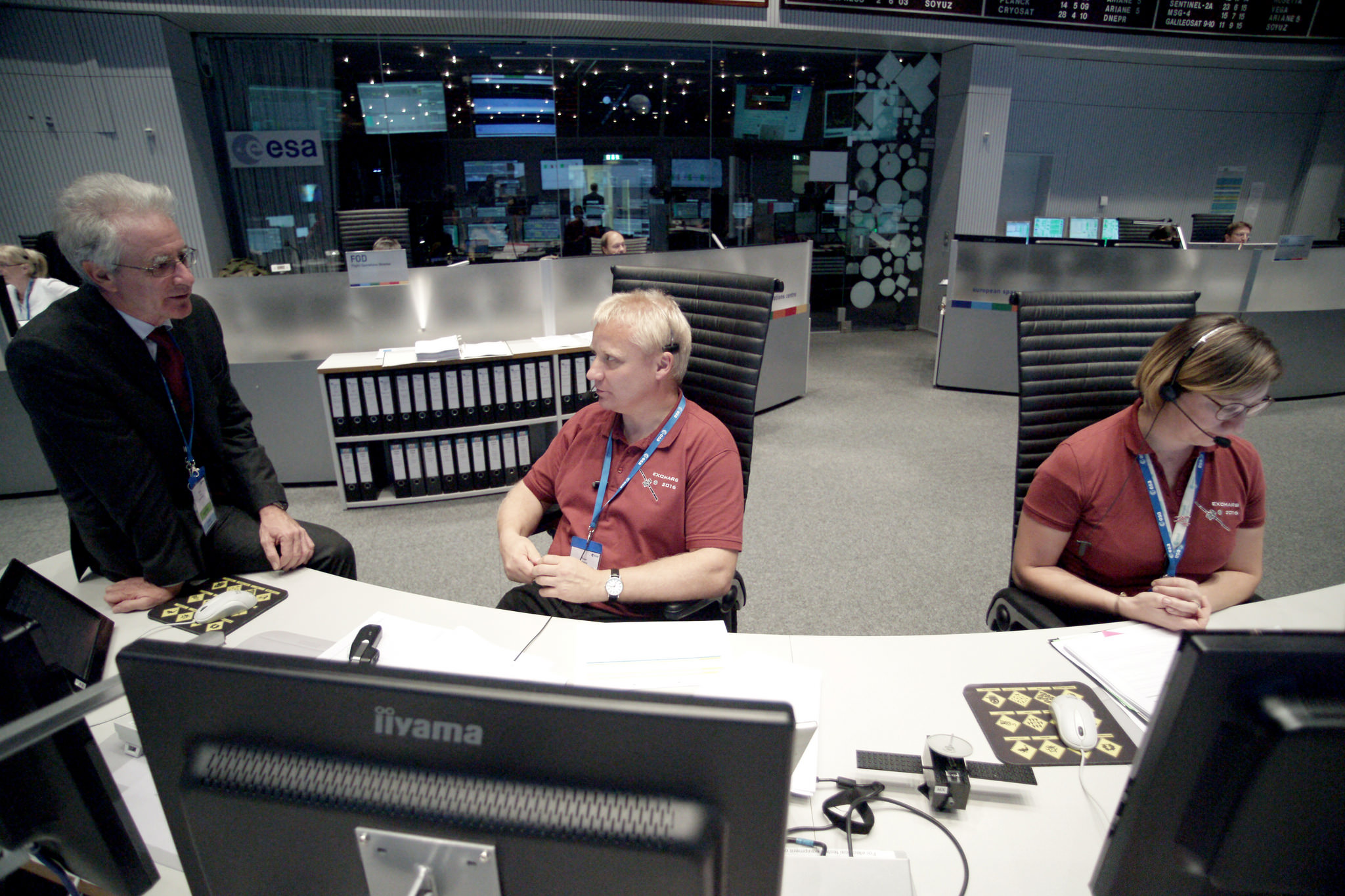
ESA's mission operators await the landing of the Schiaparelli spacecraft at the ESOC mission control center in Darmstadt, Germany on Oct. 19.
Join our Space Forums to keep talking space on the latest missions, night sky and more! And if you have a news tip, correction or comment, let us know at: community@space.com.

Hanneke Weitering is a multimedia journalist in the Pacific Northwest reporting on the future of aviation at FutureFlight.aero and Aviation International News and was previously the Editor for Spaceflight and Astronomy news here at Space.com. As an editor with over 10 years of experience in science journalism she has previously written for Scholastic Classroom Magazines, MedPage Today and The Joint Institute for Computational Sciences at Oak Ridge National Laboratory. After studying physics at the University of Tennessee in her hometown of Knoxville, she earned her graduate degree in Science, Health and Environmental Reporting (SHERP) from New York University. Hanneke joined the Space.com team in 2016 as a staff writer and producer, covering topics including spaceflight and astronomy. She currently lives in Seattle, home of the Space Needle, with her cat and two snakes. In her spare time, Hanneke enjoys exploring the Rocky Mountains, basking in nature and looking for dark skies to gaze at the cosmos.
